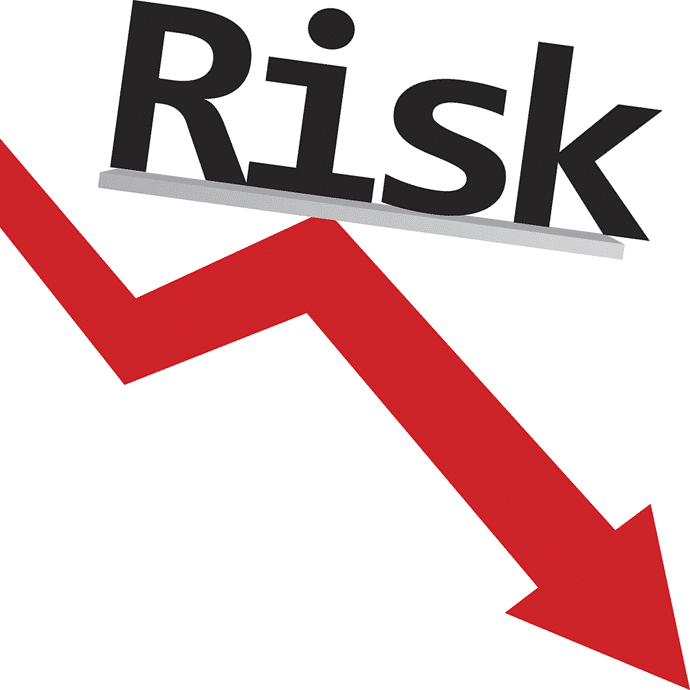Author:
Price increases to the customer. When is the best time to negotiate the price increases?
Depending on the business cycle in the economy, and on the microscale of our relationship with the client, obtaining the client's acceptance of a raise may be difficult or easy to achieve. In this article, I will cover five situations where receiving a price increase might be easier and might not hurt your long-term business relationship. When considering going up in price, it is worth taking advantage of the following situations:
- The actual quantities are much lower than previously contracted
- There are external factors that are independent from the business partner
- The old buyer resigned and a new one took his place
- Our company has not won any new business from the client in the last 12 months
- The prices of raw materials and energy are rising
1. The actual quantities are much lower than previously contracted leads us to price increases.
Depending on the industry, quantitative forecasts are subject to more or less significant error. Working long-term with the client, we will periodically receive new inquiries. If in our portfolio of projects with the client we have those that are already very old or at a much lower volume level than initially estimated, it is worth considering linking the latest, attractive from our point of view RFQ with a price increase on old projects. This is called technique of the Russian front: “The volumes on the two old projects are 30% lower than assumed. If we get this new project, we'll raise your prices by 2% for the old designs, otherwise we'll have to raise the prices by 12%. " Remember that purchases are most often settled against savings in the annual cycle for a given portfolio. It may sound harsh, but it works especially where the customer is aware that switching supplier on old projects will be very expensive or there are not too many options for a new project (mainly technical industries).
2. There are external factors, independent of the business (e.g. Tax New Order in Poland) which leads to price increases.
Tax and legal changes are a great time to organize our cost structure and margin levels on individual clients. Usually, these changes affect everyone and nobody questions them. It is important not to miss this moment and come in with raises. A client's organization massively bombarded with price increases will be more likely to accept ours as well, without going into too much detail. A timely increase in prices will also leave a smaller split in the long-term relationship. If we start talking too late, when the customer has already caught his breath, we will put our company at risk of much more resistance and being badly remembered, which of course has an impact on the long-term relationship with the customer.
3. The old buyer resigned and a new one took his place, what is the right moment to consider price increases.
In 9 out of 10 cases, the quality of data management and documenting the history of offers and negotiations is much better in sales organizations than in purchasing organizations. Many purchasing organizations rely on spreadsheets, email programs and pdf files. Often, when the old buyer leaves, he/she takes all the knowledge with him/her, and the new one is left with a "blank card", which often puts him/her in a difficult situation. If the client has an ERP system, simplifying it, it contains prices, but it lacks the history of the tendering process, and it lacks the history of events that took place during the cooperation. Even if the client has a purchasing platform, it does not immediately prove that he is actually managing the bidding processes and relationship history well. Often, buyers rotate every 2-3 years, and people in sales look after a specific customer for much longer. If the terms of cooperation with a given customer do not meet your boundary requirements, then a change of buyer is a good time to request a raise. The new buyer will get to know his suppliers. If you get a lot of his time at the beginning of the relationship, the story of a raise may turn into a story of success for new projects!
4. Our company has not won any new business from a client in the last 12 months. Consider price increases to rebuild relationship.
This point is related to the first point. When advising purchases, we tell them about two indicators that function in sales. The first is "hit rate", where suppliers compare customers with each other, looking at how often, out of 10 offers submitted to different customers, they win a new project and of what value. The second is the ratio of current income and fixed costs per customer. Both of these indicators define which client to dedicate time and resources to, because such an investment will have the highest ROI. Buyers cannot benchmark suppliers with impunity. We as sellers, already having a business with a client, should signal that since we are not winning anything new, we are forced to raise the price for the client. Sometimes it is worth disciplining the client. Either client walks away by themself or we find a new path together.
5. Prices of raw materials and energy are rising.
The purchasing function often receives official letters / e-mails signed by a very important person [VIP]
"VIP" person in the supplier's organization with information such as:
“To protect our customers from inflationary pressure, we systematically optimize our production processes, however… due to the increase in electricity prices, we are forced to increase the prices of our products by 20%….
Sincerely
A very important director "
It is a popular form of mass communication of increases. 50% of customers will not answer anything, and we will simply change the prices to higher in our system and start invoicing according to new pricelist. The rest of the customers will try to negotiate, and few will spend a lot of time on it. Most often they will be those where we have a significant share in their cost structure. If in our cost structure an element is a significant part and its price on the market often changes, it is also worth trying to force the customer to switch to a pricing formula based on an independent index. In this way, we transfer part of the risk of running our business to the client, assuming a neutral position. Normally, when preparing for talks on pay rises, we only do it from our perspective. We look at the share of, for example, electricity, fuel or steel in the costs. Look which groups are important for the client, where he has a lot of exposure and with these things also argue " blood is thicker than water". The client's imagination will start to work harder and it will be easier for us.
Price increase to the customer. Where to look for support?
Eveneum supports companies in negotiating price increases with their clients. We work with Polish companies exporting to Western Europe and with international concerns communicating increases to clients in Poland. If you have difficulties in winning a satisfactory price increase, we will help you by:
- sector analysis and preparation of strong arguments
- developing a communication and negotiation plan
- participating in negotiations or negotiating on your behalf
Rafał Dados
18+ years of experience in project sourcing and strategic procurement. Managing Partner at Eveneum, a company specialized in advisory and competencies development. Focused on sectors where relationship building and trust element between partners is the mission critical factor. Supports customers on early suppliers engagement processes and early procurement engagement into R+D work. He has been delivering projects related to: negotiations on behalf, niche technology suppliers scouting. Keynote speaker at Polish and international conferences. Lecturer at Jagiellonian University (Procurement Management post graduate studies).










